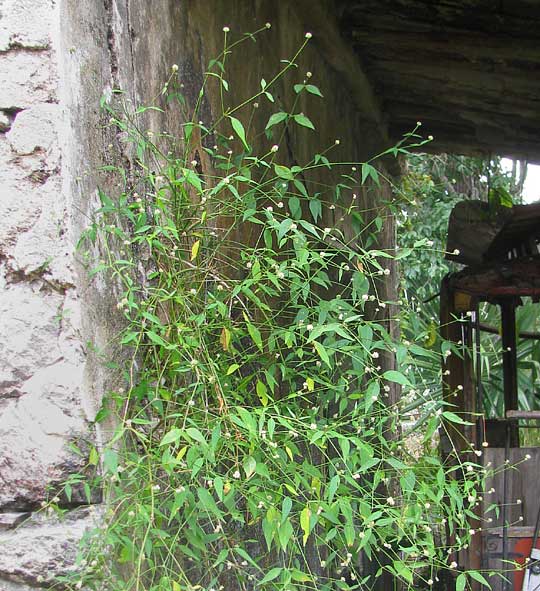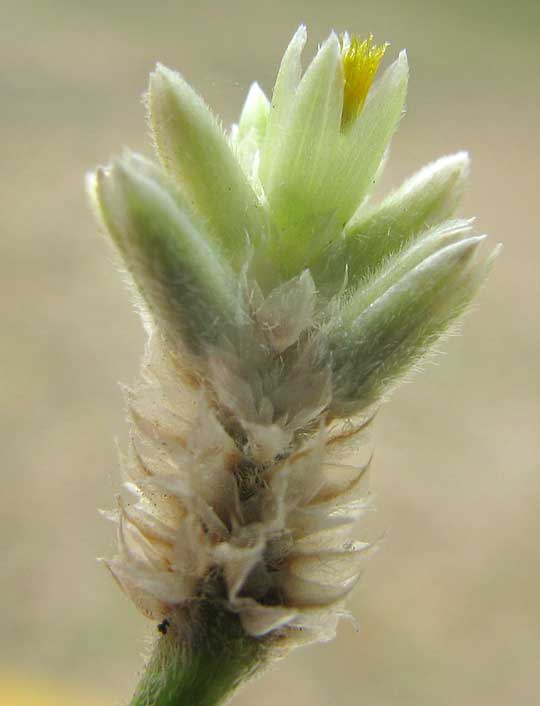Excerpts from Jim Conrad's
Naturalist Newsletter
from the February 21, 2010 Newsletter issued from Hacienda Chichen Resort beside Chichén Itzá Ruins, central Yucatán, MÉXICO; limestone bedrock, elevation ~39m (~128ft), ~N20.676°, ~W88.569°
YELLOW JOYWEED ON THE WALL

Growing from a crack in the church's rear stone wall for months an interesting "weed" has been developing. I've been looking forward to its flowering so I could figure out what it is. You can see it with its flowers above.

Above a close-up shows a flower head. Its most striking features how that it is a short spike in which each flower is subtended by sharp-pointed, papery scales. Whenever you see a flower head with such crammed-together flowers and conspicuous, papery scales, the Amaranth Family should come to mind. Our church-wall plant keys out to ALTERNANTHERA FLAVESCENS, in English often and inexplicably called the Yellow Joyweed. It's a native of Florida and the Yucatan south to the northern half of South America.
If you're familiar with waterweeds of the US Southeast you may see a strong resemblance between Yellow Joyweed's flower head and those of Alligatorweed, Alternanthera philoxeroides, which back in 2003, writing from near Natchez, I described as #1 on Mississippi's list of the Ten Worst Invasive Weeds. Alligatorweed, however, forms dense floating mats on lakes and slow-moving streams. That's a long way from growing from a chink in a church's limestone walls.